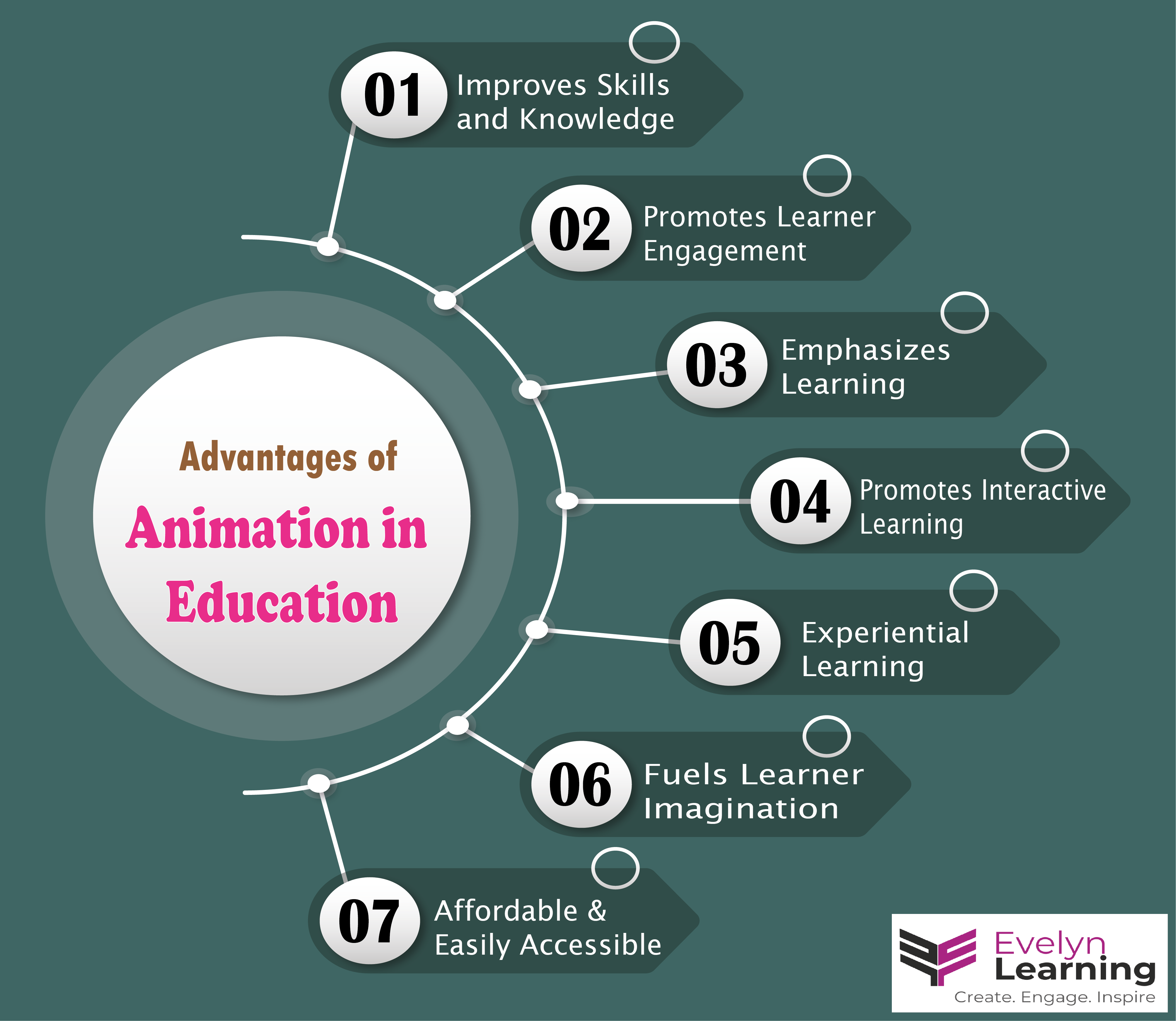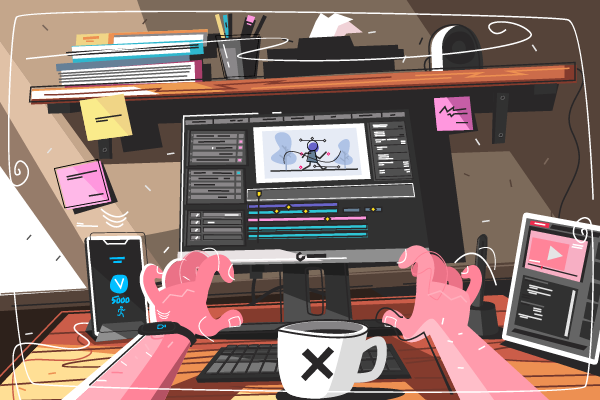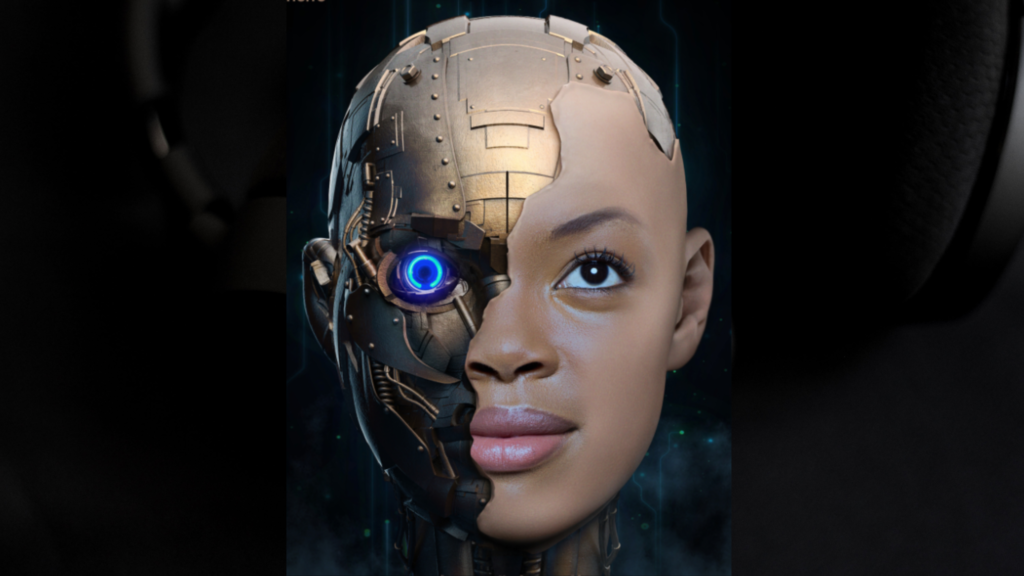Animation occurs when images, drawings, or pictures are placed and played in sequence to create an illusion of movement. The use of animation in education is increasing in popularity with new trends in education. The fact that it eases the learning of complex concepts contributes to making it a popular choice among educators and learners. Animation brings learning to life and applies to nearly all subjects. Consequently, this allows educators to explain different concepts with the help of visual representations. Also, it is a fun learning approach that promotes experiential learning.
Moreover, eLearning animation is an interactive learning approach that works well for any chosen subject. It offers numerous benefits to educators and learners. This article brings to light the many advantages of animation in education.
7 Advantages of Animation in Education
1. Improves Skills and Knowledge
Animation in education makes use of visuals for learning. It presents abstract concepts through visuals to provide learners a clear picture of the lesson. For instance, educators can create animated videos to teach cell biology in science class. Learners can get a fair idea of the structure of a cell through an animated video. Furthermore, the learners can also learn the functions of various organs in the body through such videos.
A noteworthy feature of animation in education is its visual impact on the learners. Owing to their short attention span, contemporary learners often digress from the lesson and fail to learn effectively. However, animated videos are short and cover only relevant content while grabbing learners’ attention. Consequently, learners develop their skills and knowledge through short visual representations.
2. Promotes Learner Engagement
Animation in education is all about interactive learning. It incorporates various learning styles in one. As the learners indulge in the enriching visuals, they participate in the learning process. Educators can use animation to create lessons as well as assessments that engage learners. Different teaching methodologies can serve their purpose with the help of animation. For instance, gamification a useful technique to design assessments where animation is used in the form of games. Game-like situations ignite a sense of thrill in the learners who look forward to moving ahead and win. Also, it is a rejuvenating exercise that diverts the mind from a monotonous learning schedule.
3. Emphasizes Learning
Animation in education is a combination of entertainment and learning. Animated eLearning videos cover complex topics with easy-to-understand visuals. The contemporary tech-savvy learners like to spend most of their time watching short, entertaining videos. As a result, learners would likely prefer a short informative video for learning rather than attending a lecture. Also, there are chances that they might replay an animated video if they find it interesting.
Additionally, with powerful visuals operating on-screen, the learners’ attention is engaged. They immerse in the learning experience and can easily retain the lessons.
4. Interactive Learning
Video-based learning is known to be an effective method of learning, owing to its numerous benefits. Different learners follow varied video learning styles, depending on the patterns of learning that they follow. The use of graphics and audio makes learning interactive and participatory. Learners interact with the course content and comprehend the lesson quickly. Also, the retention rate is higher when the concepts are in the form of videos. Gamifying a lesson is one of the strategies of interactive learning.
5. Experiential Learning
Animation in education presents abstract concepts through virtual reality. AI and VR together bring flexibility in learning intricate concepts. For instance, certain science experiments are often too hazardous to be performed in real-life. Although they form a crucial part of learning, such experiments are difficult to execute in real-time. Animation in education allows learners to experience such experiments that are otherwise not safe to perform. Virtual reality videos show the actual experiments with complete accuracy of results. It gives the learners an experience that they could only get by performing them in real life.
Another instance of the use of 3D animation in education is its use to demonstrate geometrical shapes in math. Educators can use 3D animation to teach geometrical principles and their real-life application. It can also be used to showcase many historical events to make history interesting to learn.
Moreover, the learners cannot learn each concept practically while attending an eLearning class. Here, animation provides an alternative through experiential learning.
6. Fuels Learner Imagination
Videos can teleport the learners to an entirely different world with virtual reality. Learners get a glimpse of otherwise unimaginable concepts through animated videos. The use of different colors, shapes, and pictures appeals to the learner’s imagination. Consequently, they learn to create abstract images in their minds. Also, learners develop vivid imaginative abilities as they come across possibilities through visual animation. Not only do they gain knowledge about the subject but also learn about technology. They discover how technology can make learning easier by converting anything imaginable into virtual reality. As a result, learners get an understanding of scenario-based learning and develop social and practical skills.
7. Easily Accessible and Affordable
Employing animation in education is extremely affordable. Contrary to popular myths, animated videos are budget-friendly. Educators can use any form of animated videos without having to compromise on quality. Additionally, another benefit of using animation in education is that it is readily available. Educators can use one animated video to teach a large number of learners for a long time. Also, learners can revisit a video for recapitulation and revision. This means that they can access these videos anytime and anywhere. The only requirement is a smartphone or computer with an Internet connection.

Final Note
Teaching methodologies are no more confined to classroom activities. Learning now involves more technology than it ever did. The dynamic and sturdy rise in edutech is contributing to the development of new teaching methodologies. These methodologies focus on the holistic development of the learners with innovative teaching-learning methods. The use of animation in education facilitates educators and learners in a variety of ways. Not only it assists learning but also gives educators freedom to use a combination of teaching methodologies. They can quickly pick-up an animated video about a topic and show it to the learners for better understanding. Various teaching methodologies focus on the holistic development of the learners with innovative teaching-learning methods. The use of animation in education is another such development in tech that is continuously evolving. Its various advantages mentioned in this article make it an attractive learning solution for all levels.
Furthermore, innovations in virtual reality and artificial intelligence constantly work to enhance learners’ experience. The introduction of these innovations in education opens new opportunities and immense learning possibilities.
Research websites: Medium and Mom and More
Images: Shutterstock and Freepik
For more information on Interactive Learning, visit our blog. Create. Engage. Inspire.















